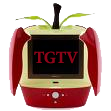In New York City and elsewhere, at least over the last few decades, a certain pattern has emerged. GLBT men and women (often those who have fled other parts of the world where they have felt less welcome) arrive in New York City looking for decent jobs and inexpensive housing. Because Manhattan is so expensive, they end up moving into neighborhoods that had been thought of as dangerous, bad, or uncool. (As someone who was once a poor NYU student in Greenwich Village, I know about moving to those neighborhoods, although in my time–the early 1990s–the West Village was already pricey.)
But over time, thanks in no small part to those GLBT pioneers, those neighborhoods come to be seen as cool. Investment follows, as do visible improvements. Restaurants, condominiums, businessess… the whole thing changes. Real estate prices go way up. And boom, next thing you know those young people who are new to the city can’t afford to live there anymore, so they settle in some other uncool neighborhood and make that tasteful, optimistic, and booming.
Guess what? There’s hardly any of Manhattan left!
It’s no secret that the epicenter of that GLBT culture (the gay rights movement is widely said to have been touched off by some police brutality that resulted in riots at the Stonewall Tavern) has long been the West Village, so it should be no surprise that the West Village is one of the most delightful areas of the city–even if it has become much less a center of gay culture and is now seen mainly as one of the most desirable neighborhoods in Manhattan.
Part of that comes from the reality that is a destination–not a place to pass through. Literally… thanks to the narrow streets (some cobbled), lots of pedestrians, and countless tiny back streets, this is not a place to drive through on your way somewhere else.
The streets of the West Village defy the grid system. The conventional logic of Manhattan navigation to not apply here. For instance, in most of Manhatthan, 4th street would be six blocks south of 10th street. In the West Village, it is too, at one point. But there is also part of the West Village where those two roads intersect. And another part of West Fourth street is eight blocks to the north of West Tenth.
Take away message: don’t drive around the West Village without someone who knows what they’re doing.
But on the other hand, if you have some time, why not? You’ll see some amazing stuff. Cobbled streets, private, gated courtyards, and that rarest of Manhattan sites: well-tended window boxes, with flowers tumbling down towards the street.
The restaurants are amazing. Doug’s wife Kate is an editor at Food & Wine magazine. She reports there are "LOTS of very good options in that area." Her recommendations include:
Some of the newish (2 years or less), really awesome places are: The Spotted Pig (I’m nuts about this place), Little Owl, and Fatty Crab. Other great places are: Mary’s Fish Camp, Maremma, August, Wallse, and Crispo.
The Hudson River Park has given the West Village some wide open riverside greenspace to compliment various smaller parks like Washinton Square and James J. Walker Park. In addition, Mayor Bloomberg recently broke ground on the redevelopment of more than a mile of elevated railroad track, known as the Highline, which will become public space. The southern end of the Highline is in the West Village. (Learn more about the Highline here.)


